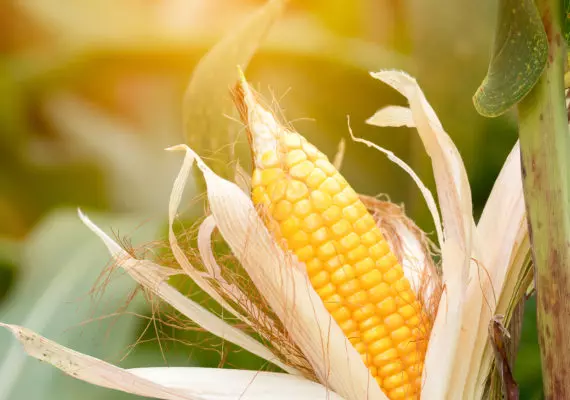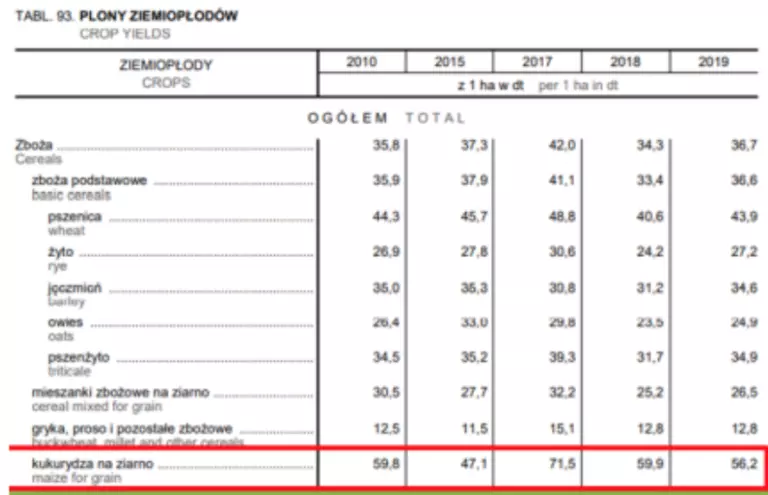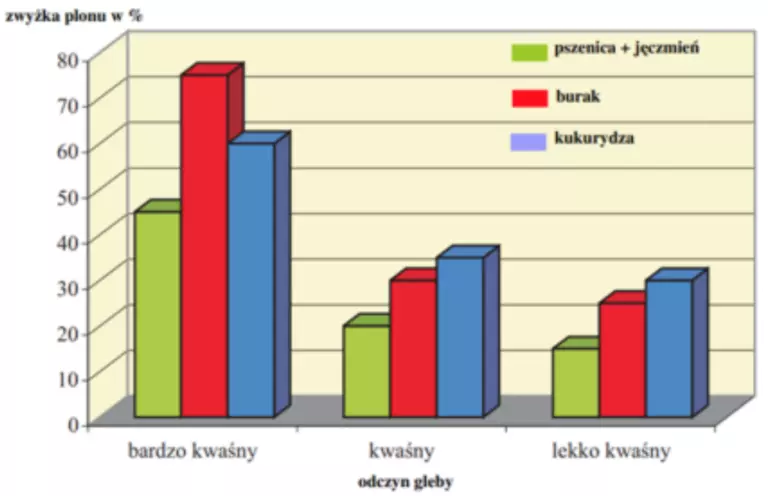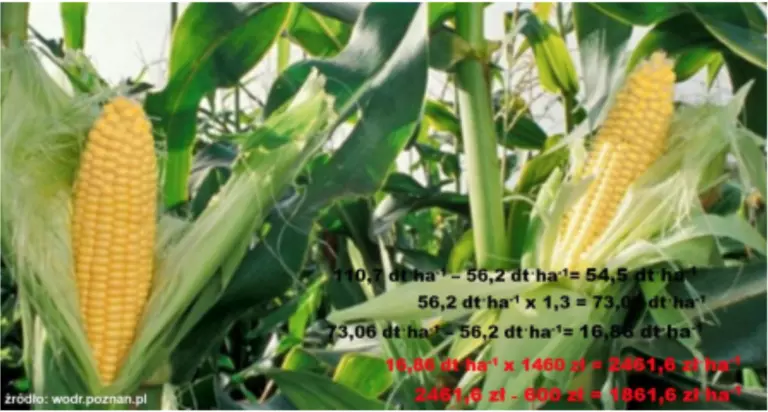
Lime is one of the most important macronutrients necessary for the growth and development of plants. Many authors have shown that this element not only improves soil pH but is also essential for the most important physiological processes in plants. In the article, a simulation of profits was conducted, demonstrating the significant impact of liming on the profitability of maize cultivation. The use of Polcalc III Generation or SuperMag lime contributes to raising the soil pH from acidic to optimal for maize grain growth. The estimated value of the calculated yield increase after the lime application was 16.86 dtˑha-1, which, when multiplied by the grain purchase price on April 7, 2022, increased in value to 1861.6 zł ˑha-1.
Maize is the most important fodder crop grown in Poland for grain and silage. The area under maize cultivation in 2019 was 1621 thousand hectares, which was 402 thousand hectares more than in 2014 (Statistical Yearbook of Agriculture 2020). Such a significant increase in maize cultivation area indicates that it is being grown on increasingly poorer agricultural land characterized by acidic soil pH low organic matter content and essential mineral nutrients. This view is confirmed by comparing the average grain yields of maize harvested in 2019 on farms with those obtained at the experimental stations of the Central Experimental Station for Cultivar Testing. In the case of farms, the yield was 56.2 dtˑha-1, while at the stations, it was 110.7 dtˑha-1 of grain with 14% moisture content. The difference in yield obtained is as much as 54.5 dtˑha-1. This indicates that maize at experimental stations is grown on soils rich in nutrients and with an optimal pH level of 6.0 – 6.7. Meanwhile, maize on farms is usually grown on soils with low organic matter content and essential mineral nutrients, often with acidic pH ranging from pH 4.6 to pH 5.5. As numerous scientific studies have shown, acidic soil pH inhibits the uptake of macronutrients, significantly reducing maize yields (Hałubowicz-Kliza 2006, Deja and Remarczyk 2018). Deja and Remarczyk (2018) determined the effectiveness of liming based on their research. They showed that raising the acidic soil pH to the optimal level for maize results in a grain yield increase of 33-70%. These authors also demonstrated that the use of magnesium lime further increases the yield by at least 10-15%, indicating the „pure” effect of magnesium on soils deficient in this element. Hałubowicz-Kliza (2006) determined the effectiveness of basic liming depending on soil pH (Fig. 1). The author showed that raising the soil pH from acidic to optimal for maize, through liming, results in a 30% increase in grain yield. To achieve the intended effect, 1-2 tons of lime per 1 hectare of maize cultivation should be applied (Tab. 3). However, this dose depends on the degree of raw material fragmentation, which affects the reactivity of lime – the rate of soil pH increase (Fig. 2). Therefore, it is particularly important to use good and proven carbonate lime fertilizers that have a beneficial effect on soil structure and pH. One of the best domestic producers of lime fertilizer is Polcalc Calcium Fertilizers Ltd.
The literature data presented above allow for determining the effect of lime dosage on increasing the profitability of maize cultivation for grain. This is particularly important now, i.e., in the period preceding maize sowing. Assuming that the average grain yield of maize in 2019, as shown above, obtained on acidic soils, will be increased by 30% through the basic liming treatment according to the research of Hałubowicz-Kliza (2006) to 73.06 dtˑha-1. The obtained increase in maize grain yield, i.e., 1.686 tˑha-1, multiplied by 1460 zł – the current price of purchasing 1 ton of grain on April 7, 2022, will yield an additional amount of 2461.6 złˑha-1, which should be reduced by the price of lime purchase and spreading. In the case of using granulated lime such as Polcalc III Generation or SuperMag (granulated lime with magnesium), 600 zł should be subtracted from 2461.6 złˑha-1. Then, the profit obtained thanks to the basic liming treatment will be 1861.6 złˑha-1 (Fig. 3). Granulated lime, such as Polcalc III Generation and SuperMag, can be applied in early spring, at the beginning of March, before maize sowing or top dressing when the plants have developed 2-4 true leaves. These granules are completely safe for maize and can be applied even to moist plants.
Detailed information regarding the mentioned lime fertilizers and their purchase options can be found on our website – polcalc.pl.

Tab. 1. Average maize grain yield at 14% moisture content obtained on farms in 2019 (source: Statistical Yearbook of Agriculture 2020)

Tab. 2. Average grain yield, for the standard, of maize at 14% moisture content obtained in pre-registered experiments conducted by the Central Experimental Station for Cultivar Testing (source: COBORU, Preliminary results of variety yield trials, Maize 2019)

Fig. 1. Effectiveness of basic liming depending on soil pH (source: Hałubowicz-Kliza 2006)

Tab. 3. Lime dosage on arable land in tons of CaOˑha-1 (source: Hałubowicz-Kliza 2006)

Fig. 2. The impact of lime fragmentation on the speed of soil pH change (source: Collective work edited by R. Czuba. Mineral fertilization of cultivated plants, Police 1996)

Fig. 3. Profit from maize grain cultivation (złˑha-1) obtained after applying granulated lime (source: photo wodr.poznan.pl; author’s calculations)






